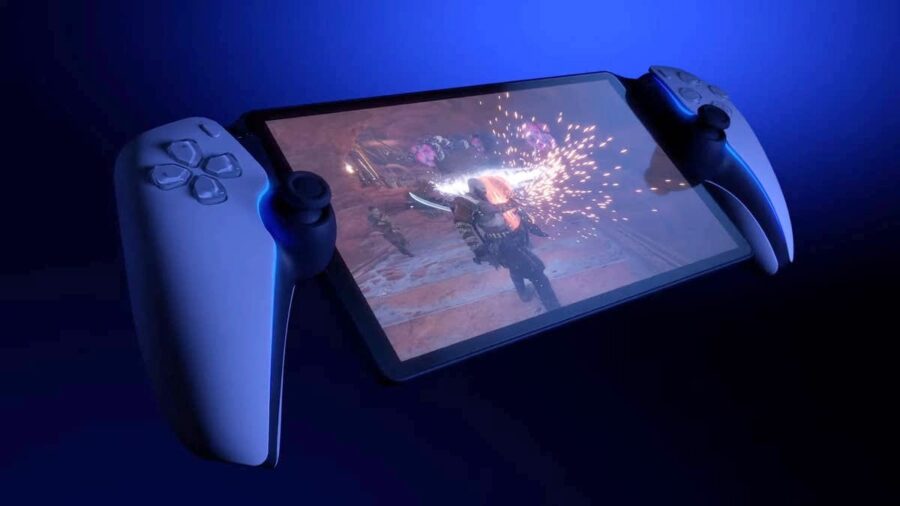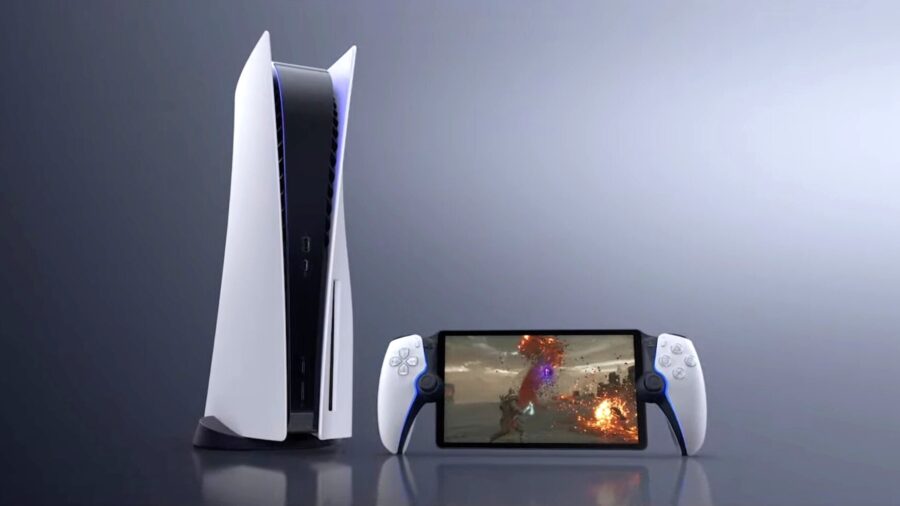Sony Reveals A Handheld PlayStation 5
Sony unveiled the upcoming PS5 handheld, currently known only as Project Q.

The fans have been asking Sony to make a successor to the massively popular PS Vita handheld for the better part of the last decade, and Sony has finally listened. Unfortunately, the new handheld console from the Japanese gaming giant sets out to disappoint Vita fans, as it’s nothing more but a mere streaming device that makes gaming on PlayStation 5 much more convenient, especially with the shortage coming to an end.
PlayStation’s Showcase showed more than just the amazing gameplay of the upcoming Marvel’s Spider-Man 2—it also featured a new handheld by Sony. However, unlike the iconic Vita, which was a standalone console backward compatible with its successor, the Sony PlayStation Portable, the new handheld is an accessory to the current Sony flagship, the PlayStation 5. Named “Project Q,” the new handheld is actually a dedicated device that allows gamers to stream any game from their PS5 console using remote play over Wi-Fi.
Nothing much is known about the new PlayStation handheld, apart from it being a streaming device rather than a console, the fact that it will feature an 8-inch LCD HD display and all the features of the DualSense wireless controller. Sony touted the new device’s ability to play games at up to 1080p and 60fps over Wi-Fi, which isn’t really all that surprising. However, there’s a lot to unpack here, like the device’s reliability on Wi-Fi, Remote Play, and what exactly pushes Sony to re-enter the handheld market years after it lost to Nintendo.
The story begins in early 1988 when Sony and Nintendo announced their partnership and collaboration on a new console. The deal, unfortunately, fell through—we bet it was Nintendo’s fault—and Sony drew a shorter end of the stick. Well, to exact its revenge, Sony followed up with its plans to make its own console, and both the original PlayStation and PlayStation 2 played a massive role in pushing Nintendo’s home consoles out of the market—inadvertently securing Nintendo’s success in the handheld market, with Nintendo Switch achieving a huge record.
Well, Sony sought to conquer the handheld market as well, and they launched the iconic PlayStation Portable as the main competitor to Nintendo DS. However, despite the more mature games and better computing power, PSP couldn’t compete with the DS, which had a better battery life and two screens—which is reflected in the sales number; Nintendo DS is still the world’s best-selling handheld, outperforming Nintendo Switch by 30 million units in sales. However, Sony introduced Remote Play in that generation—the ability to stream PS3 titles to the PSP.

This feature was then introduced with PS Vita, a more advanced handheld and a successor to the PSP. It also featured a Remote Play capability compatible with PlayStation 4, but it couldn’t really compete with the increasing competition from smartphones and the increased popularity of mobile gaming. The system sold less than 20 million units globally, and Sony officially pulled the plug on its handheld gaming division. But then came the Nintendo Switch, and handhelds became a thing once again.
So, the new PlayStation handheld is Sony’s response to the growing popularity of handhelds in the current market—even the PS Vita community started thriving again. However, the decision to make it exclusively a streaming device, though disappointing, is a sound one. It mitigates the risk of a potentially failed investment into dedicated hardware and software development while relying on an established service and catering to the increasing market demand.
Sure, the optimal play would require that you’re connected to the same LAN as your PS5 console, but it will likely allow you to connect to the internet and play the games remotely from a different location. Also, it’s worth noting that gaming giants are now investing heavily in cloud gaming, so it’s entirely possible for the new device to feature such capabilities. Unfortunately, it’s too early to tell; the details surrounding Project Q are very scarce, but we’re likely to hear more in the upcoming months. A Vita 2 would’ve been better.










